Sites for discussion: notes on Liam Gillick
Yet it is uninteresting to become involved in a fetishisation of indecision. That is not what this book is about. We are dealing with the absent presence of ideas. It is not a case of multiplicity and the potential of doubt. We are engaged in a faded analysis. (Erasmus is Late, All Books, p. 56)
Gillick’s first exhibition was 84 Diagrams in 1989 at Karsten Schubert in London. It consisted of four boxes of designs for modernist buildings that were deliberately faulty. ‘At the opening the printouts were passed around and the only other thing on display was the boxes themselves.’ (Art Review, 2012: http://caseykaplangallery.com/wp/wp-content/uploads/2012/12/Art-Review_2012_Tom-Eccles-Liam-Gillick.pdf)
One option here is for us to chase a consistent level of ongoing invention… Maybe…we are in fact taking part in the construction of a whole new series of tiny moral frameworks that guide our actions instead of some grand, overwhelming and therefore rather clumsy idea. (Erasmus is Late, All Books, p. 56)
to quit the role of spectator within the spectacle and start becoming part of the paradox and not just an observer of its effects. (Erasmus is Late, All Books, p. 60)
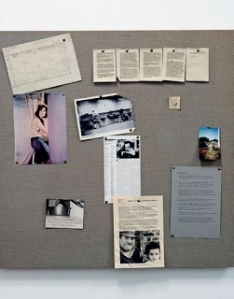
Pinboard Project, 1992
Gillick has often used pinboards as ways of exhibiting texts and diagrams. Bulletin boards on which visitors can pin pages from magazines and books.
There are parallel activities. These varied engagements may be carried out by people capable of noticing temporary gaps in the construction of society. Entering those ill-defined spaces and mimicking the activity of close neighbours… It sets up the beginning of parallel histories that permit the creation of a number of new possibilities. The trick is to know when to get in and when to get out. (Erasmus is Late, All Books, p. 61)
For Documents, Gillick and Henry Bond posed as a news reporting team, attending events scheduled in the Press Association’s Gazette. Bond worked like a photojournalist, joining the other press photographers present; while Gillick operated as the journalist, collecting the press kit and making an audio recording of the event. Each work in the series takes the form of a photograph by Bond and a text panel giving the time, date, and location of the event, together with a brief description and sometimes an extract from Gillick’s audio recording.
All I know is that it is necessary to create debate. Discussion has been closed for so long. I want to develop sites for freethinking and resurrect some from my youth. These locations surround me but they need to be connected. They are specific but also intangible. (Erasmus is Late, All Books, p. 57)
the creation of centres, places where practical demonstrations can occur, an exploration of ideas and proposals within a setting that acknowledges the dominance of spectacle… (Erasmus is Late, All Books, p.61)
McNamara (1992-5) is a script for a film produced from notes made by a reviewer staying in London in the margins of copies of various books. The script was exhibited in various forms including outlines, drafts and as an animated film. Texts are displayed on walls and on tables: the exhibition as a space in which to read.
The places of discussion and the places of learning are heightened for me in a way that is hard to express. (Erasmus is Late, All Books, p. 59)
Think of a nightclub, any nightclub, somewhere to go in the centre of London towards the end of the twentieth century. A place to watch and feel part of a continuing exchange of visual references. (Erasmus is Late, All Books, p.65)
They are all locations of thought. Ideas are linked to these sites… places where people and ideas may come together. (Erasmus is Late, All Books, p.66)
Gillick produced a series of Prototype Erasmus Tables displayed in various locations: FRAC (Bourgogne), Online (Gent), Lisson Gallery (London), Emi Fontana Galerie (Milan). Prototype Erasmus Table #1 (Bourgogne) exhibited a manuscript of the book Erasmus is Late at its centre, unattainable because of the size of the table. Invited to exhibit in the gallery Online in 1994, Liam Gillick used the entire given space to build Prototype Erasmus Table #2 (Gent) which could be used as a working table to complete the writing of the book Erasmus is Late. The huge square plywood table displayed various books and papers on a range topics, functioning as a flat pinboard, a site for the display and activity designated by the users of the work. (http://www.ecoledumagasin.com/session23/en/category/from-199c-to-199d/)
how exciting it would be if you could enter a state of continual reconsideration rather than a simple, straightforward way of looking at the world… in order to do this he will need some new starting points… this guide… [has] got something to do with creating a new way of looking at the world. Or at the very least a new way of creating some starting points in order to help us devise a way to live, an alternative to the rise of free-market thinking. (Ibuka, All Books, p. 119)
With McNamara and Erasmus is Late the text was begun first and the exhibitions grew out of it. With Discussion Island/Big Conference Centre, the exhibitions came first: installations of corporate décor as an ambiguous backdrop for unspecified discussion. Gillick then wrote the text, which he terms a ‘predictive report’, not to document the exhibition but as a parallel activity: a series of scenarios previsioning the proposed conference centre.
…we are left with only the tools of scepticism and irony, which are no longer good enough… we have a domination of scepticism attempting to shadow-box an enemy which has long since feinted out of range… one option is to try and address the vast central area that includes bureaucracy, compromise, conciliation and so on. Not to illustrate these things, but to address them. To look carefully at the mechanics of our political and economic context without resorting to irony or distance. Not to make that vast compromised central area into a subject but to move inside the thinking and add to the confusion. (Discussion Island/Big Conference Centre, All Books, pp. 146-7)
Quotes taken from texts of McNamara Papers, Erasmus is Late, Ibuka and Discussion Island/Big Conference Centre, in Liam Gillick, All Books (Book Works, 2009)
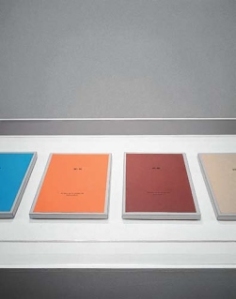
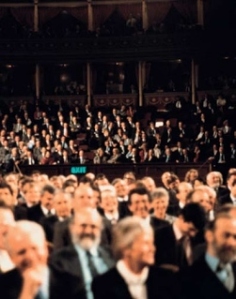
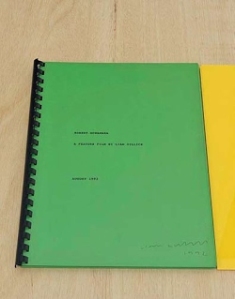

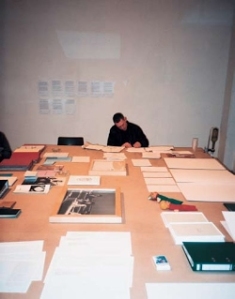

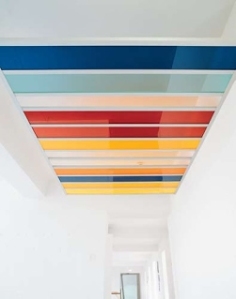

Dear Steve,
I hope you are all well. Thank you for the really engaging work on your blog, Iâll have to give it more time soon. Meanwhile, I wondered whether or not you heard from Veer, I haven’t written a paragraph for it yet and presumed you will prompt me when necessary.
Best wishes, Allen
Allen Fisher in Hereford allenfisher1@mac.com http://www.allenfisher.co.uk
>
Posted 9 years, 3 months agoDear Allen
Thanks for your comments. I’m currently working on a new post in response to Sputtor with reference to Breaks Margins. Really enjoying engaging with that – will hopefully post something soon. Also will keep you informed on any outcome with Veer.
Best wishes, Steve
Posted 9 years, 1 month ago